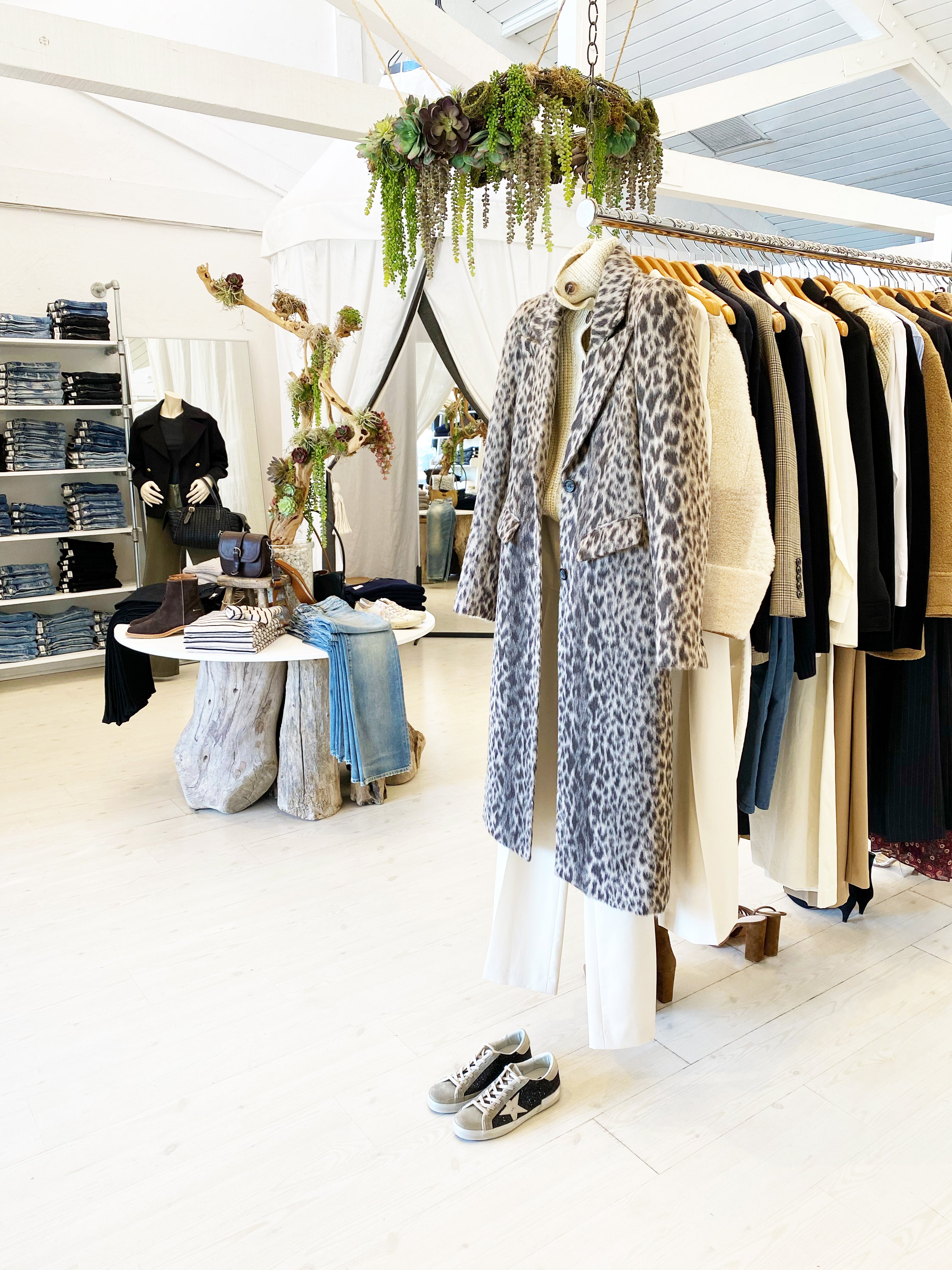Sustainable Fashion: Just How Eco-Friendly Clothes Is Shaping the Future of Style
As the fashion market faces boosting examination over its ecological impact, the surge of sustainable fashion provides an encouraging alternative that lines up style with ecological duty. boutique fashion. How does this movement absolutely affect the future trajectory of style, and what obstacles lie in advance in its widespread adoption?
Cutting-edge Sustainable Materials
As the apparel industry faces its environmental impact, innovative lasting products have actually emerged as a critical solution for reducing environmental impacts. Among the most encouraging materials are those acquired from natural, eco-friendly resources, such as organic cotton, hemp, and bamboo. These products not just lower reliance on fossil fuels but also minimize unsafe chemical use and water intake. Organic cotton, for circumstances, makes use of considerably much less water than traditional cotton and removes the requirement for hazardous chemicals, thus preserving soil wellness and biodiversity.
In enhancement to plant-based products, innovations in biofabrication have led to the advancement of lab-grown fabrics. Mycelium leather, stemmed from mushroom origins, presents a flexible and biodegradable alternative to pet leather. Its production leads to substantially reduced carbon emissions and water use, making it a more lasting alternative for designer looking for to straighten with green methods.
Recycled products are also acquiring traction, with polyester made from recycled plastic containers standing for a substantial development. This advancement not only draws away plastic waste from land fills and seas however additionally decreases power usage contrasted to creating virgin polyester. Together, these materials emphasize the possibility for a much more sustainable garment industry, leading the method for ecologically conscious layout and production.
Eco-Conscious Manufacturing
Building on the technologies in lasting products, the fashion industry is likewise re-evaluating its manufacturing processes to better minimize ecological influence. Secret methods include reducing water usage, decreasing carbon discharges, and eliminating hazardous chemicals.
Another essential aspect is the reduction of harmful chemicals traditionally made use of in coloring and completing textiles. Eco-conscious manufacturers are changing in the direction of plant-based dyes and waterless dyeing innovations, which not only safeguard local ecological communities but also enhance worker safety. Developments like electronic printing reduce material waste and power intake, providing a cleaner alternative to traditional methods.
In addition, transparency and traceability have come to be vital. With the advancement of blockchain technology, firms can currently provide comprehensive insights into their supply chains, guaranteeing honest and eco-friendly techniques at each action. This openness develops consumer count on and motivates brands to maintain high sustainability standards. As the need for eco-conscious items expands, suppliers are urged to introduce, making sure that the future of fashion is both sustainable and elegant.
The Surge of Upcycling
Upcycling, a transformative method in lasting fashion, includes creatively repurposing disposed of materials into brand-new, high-grade products. This ingenious strategy not only decreases waste yet also reduces the need for resources, thus decreasing the ecological effect of apparel production. By rebuilding and reimagining existing items, designers and fashion brand names are able to infuse creativity right into their collections while promoting environmental obligation.

Furthermore, the upcycling movement has equipped independent developers and little services, that often lead in advancement as a result of their dexterity and imagination. By exploiting on the abundant availability of unused materials, these entities add to a round economic climate, showing that style can be both lasting and elegant. Via upcycling, the sector takes substantial strides towards a more mindful and accountable future.
Thrift Culture's Effect
The burgeoning second hand society considerably reshapes the landscape of sustainable fashion, stressing the significance of mindful intake. This social change urges customers to accept used clothes, thereby lowering the need for new garment production and decreasing environmental influence. Second hand purchasing not just extends the lifecycle of clothing yet also decreases the carbon footprint related to production, transporting, and taking care of garments.
A vital element of thrift society is its democratization of fashion. By offering a vast range my sources of designs from various ages at inexpensive costs, thrift shops make style accessible to a more comprehensive audience. This accessibility cultivates a sense of originality and imagination, as customers mix and suit distinct items to curate customized closets without adding to the rapid style cycle.
Furthermore, second hand society advertises circularity in vogue, straightening with the principles of a circular economic climate. By recirculating garments, the cycle of waste is interrupted, and sources are preserved. This method sustains a change from a direct "take-make-dispose" version to a much more lasting structure. As even more designers and consumers accept second hand society, the apparel industry is forced to adjust, incorporating sustainable methods to fulfill the growing need for eco-conscious alternatives.

Future Trends in vogue
Style's advancement is increasingly shaped by sustainability-driven campaigns and technological advancements. One popular trend is the surge of digital fashion, where virtual garments can be worn in increased reality environments, substantially decreasing fabric waste.
In addition, the assimilation of blockchain innovation uses new possibilities in transparency and traceability, permitting customers to confirm the sustainability credentials of their garments. boutique fashion. This makes sure liability in supply chains and advertises moral sourcing practices. 3D printing is yet another technology that guarantees to change manufacturing processes by enabling on-demand production, thus minimizing excess inventory and waste
Furthermore, the growth of bio-fabricated materials, Extra resources such as lab-grown natural leather and plant-based fabrics, offers sustainable alternatives to conventional products. These advancements lower reliance on pet items and resource-intensive crops. As these modern technologies grow, they are positioned to transform the style landscape, merging design with sustainability. The future of fashion, consequently, depends on a smooth blend of modern technology, development, and ecological obligation.
Verdict
The improvement of the fashion sector through lasting techniques suggests a pivotal change in the direction of ecological responsibility. This advancement not just lines up fashion with ecological sustainability but also establishes a criterion for future fads concentrated on obligation and advancement.
As the fashion sector deals with boosting analysis over its ecological effect, the surge of lasting fashion provides a promising alternative that straightens style with eco-friendly obligation.As the fashion industry grapples with its ecological effect, innovative lasting products have arised as a critical remedy for minimizing you can try these out environmental footprints. With each other, these products emphasize the capacity for a more lasting fashion industry, leading the method for ecologically mindful style and production.
Structure on the technologies in sustainable products, the style market is also re-evaluating its manufacturing processes to even more minimize ecological influence. boutique fashion.Upcycling, a transformative technique in lasting fashion, entails creatively repurposing thrown out materials right into new, high-quality items